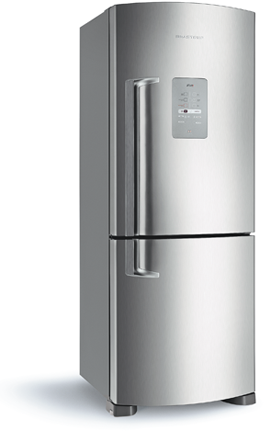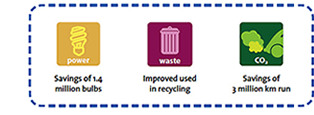Commitment to the Environment
A FOCUS ON ENVIRONMENTAL SUSTAINABILITY
At Whirlpool Corporation, we take our environmental responsibilities very seriously. Just as we have taken a global approach to our home appliance business, we believe our world’s environmental issues, such as climate change, must be addressed in a similarly comprehensive way. This is why we continue to develop innovative products that minimize impact on the environment while making our consumers’ lives easier.
Our goal as an industry leader is to develop high-performance appliances that allow people to use the earth’s resources more efficiently. We continually strive to manage the environmental effects of our business, not only by creating new and innovative products that consume less energy and water, but also by improving our processes to reduce waste, recycle responsibly and run cleaner than ever before.
Globally, we are embedding a life-cycle approach to appliance design — Design for Environment — that assesses the environmental impacts of every stage of a product’s production, use and disposal. The Brastemp brand Viva! appliances represent a new product family based on Design for Environment ideas. Resource efficiency improvements are built into the brand’s product and manufacturing processes along with improved recyclability of materials at the end of a product’s use.
REDUCING OUR CARBON FOOTPRINT
Whirlpool Corporation was the first appliance company to announce greenhouse gas (GHG) emissions goals. By 2008, we reduced our global direct and indirect GHG emissions to 3 percent below 1998 levels, while increasing production. We are now on target to reduce them to 6.6 percent below 2003 levels by 2012.
We anticipate receiving LEED certification for three new facilities:
- A new $120 million Cleveland, Tenn., 1-million-square-foot premium cooking plant that begins production in early 2012
- A new $85 million Southwest Michigan office campus that will open in the spring of 2012
- A new $40 million, 1-million-square-foot regional distribution center in Wilmer, Texas
The company has increased the use of railcars, which are more fuel efficient than trucks, and intermodal transportation, which uses shipping containers that transfer smoothly from railcar to truck. Whirlpool North America has saved more than 6 million gallons of diesel fuel and reduced CO2 emissions by more than 60,000 metric tons through these changes.
Our Cassinetta, Italy, manufacturing facility is fully powered by a co-generation plant, which derives electricity from methane gas. Steam produced by the co-generation plant’s turbines is used in industrial processes. The Whirlpool Naples production facility in southern Italy is one of the largest private solar photovoltaic plants. The facility’s roof and parking area are fitted with solar panels and cover an area of 7,500 square meters. The 1 million kilowatt hours of solar energy produced annually are sold back to the local electrical grid.
DESIGN FOR ENVIRONMENT
Brastemp brand Viva! appliances focus on energy efficiency and a consumer education campaign to achieve new levels of environmental sustainability. The environmental gains realized by the project in 2011 included:
- Emission reduction CO2 equivalent of 560 tons (30% in use)
- Increased energy efficiency in use by 24.5%
- Reduced waste of 150 kg
- Environmental education actions: RoHS Communication Certification and Recyclability Index
RECYCLING INITIATIVES
- More than 80 percent of materials used in Whirlpool Corporation’s products can be recycled.
- Whirlpool Latin America is able to recycle 90 percent of refrigerator components, and the remaining 10 percent is disposed of according to Brazilian environmental guidelines.
- The Brastemp brand water purifier has a recyclability rate of more than 97 percent.
- The Brastemp brand Viva! initiative includes collecting the packaging from Whirlpool Latin America’s products that are sold door-to-door. Nearly 60 percent of this collected packaging is recycled.
- Whirlpool Canada is a steward for packaging in three Canadian provinces — Ontario, Quebec and Manitoba — and abides by the provinces’ appliance packaging recycling requirements.
- Many Whirlpool Corporation factories and warehouses around the world reuse or recycle transportation and packaging material.



















